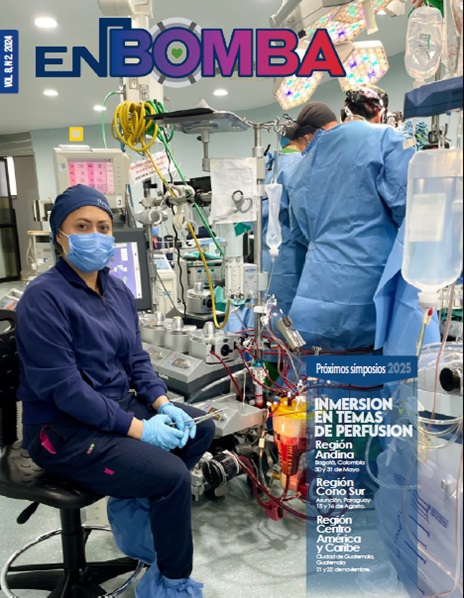Perfusion management in adult patients undergoing aortic arch surgeries in Latin America.
Keywords:
Arco, Aorta, Iberoamérica, Adultos, Anatomía del circuito extracorpóreo, Estrategias de perfusión, Circulación Extracorpórea.Abstract
Introduction: The aortic arch surgery represents a challenge to the surgical team, due to the high level of complexity to develop the surgical techniques. For this
reason, research was undertaken regarding trends adopted by Latin American perfusionists.
Objectives: To know the current perfusion strategies in adult patients undergoing aortic arch surgery in Latin America.
Methods: A prospective descriptive study was carried out based on a survey of 48 questions related to different aspects such as demographic distribution, occupation, monitoring, medical devices, surgical techniques, extracorporeal circuit components and goal directed perfusion strategies. This research took into consideration the recommendations and protocols compiled in the 2024 American Guide for the diagnosis and treatment of acute and chronic aortic syndromes.
The results were expressed in percentages, bar graphs and distribution tables. The mean was used as a measure of central tendency.
Conclusion: In the current practice of perfusion in aortic arch surgery, there is a degree of heterogeneity related to the strategies and protocols. It is important to highlight the following trends: 40.85 % performed total circulatory arrest between 18 - 20 ºC; 53.25 % used the Alpha Stat strategy; 46.75 % used the pH Stat strategy; 72.35 % did not use distal perfusion; 42.14 % used vasodilators during the rewarming; 44.52 % correct the glucose level above 200 mg/dl; 76.81 % use goal-directed parameters such as DO2, VO2 and SvO2, while 21.78 % use parameters such as CO2 at the oxygenator extraction port and extraction index.
Downloads
Published
How to Cite
Issue
Section
License
Copyright (c) 2024 Nidia Rosa Alvernia Ojeda, Eliana Marilyn Cerón López , Jeniffer Stefani Cipamocha Mora, Miriam Adela Huayta Guevara, Vanessa Portillo Yáñez, Vielka Rodriguez, Rosa María Román Jiménez, Adriana Santibañez González, Martha Serna Rodriguez, Paula Tihista Savio, María José Uriza Martínez, Berny Stephanie Villanueva Nolan, Fradwikigns Vargas Reyes, Brigida Aguerrevere Branger

This work is licensed under a Creative Commons Attribution-NonCommercial 4.0 International License.
Los trabajos admitidos para publicación quedan en propiedad de los autores y su reproducción total o parcial está autorizada siempre y cuando se haga referencia a la fuente primaria y no se persigan fines comerciales (Licencia CC Reconocimiento-NoComercial 4.0). La Revista En bomba se reserva el derecho de reproducir (parcial o totalmente) sus publicaciones así reproducir sus contenidos en otros medios o soportes digitales o físicos.








